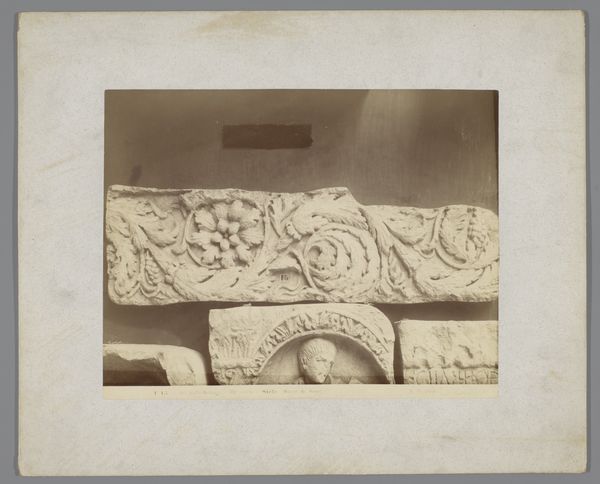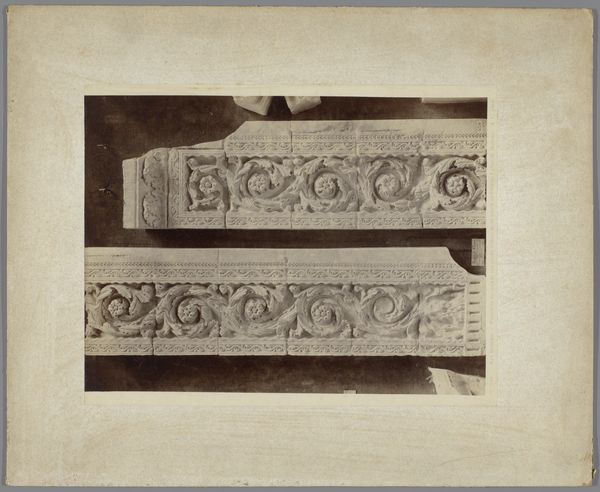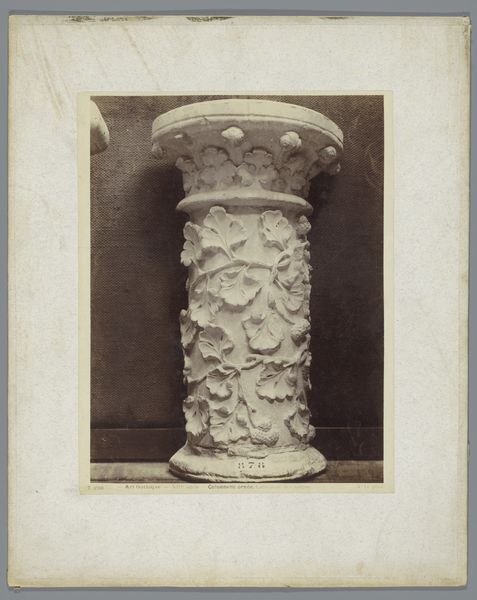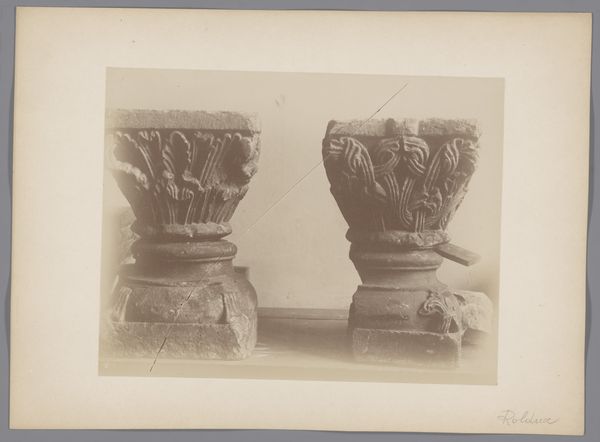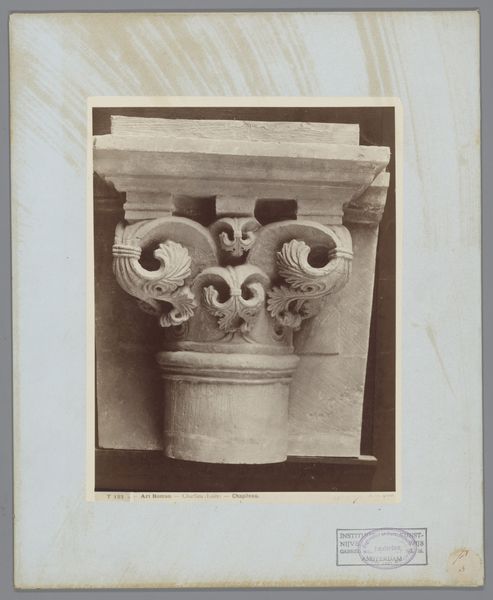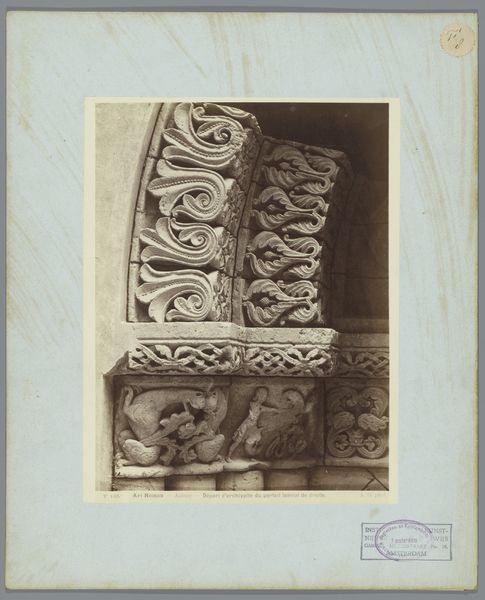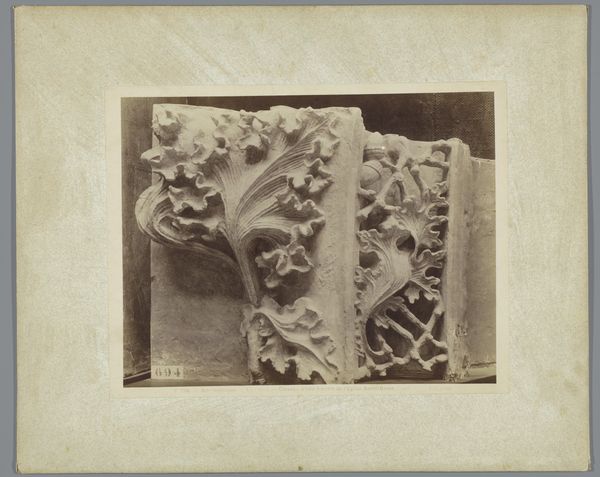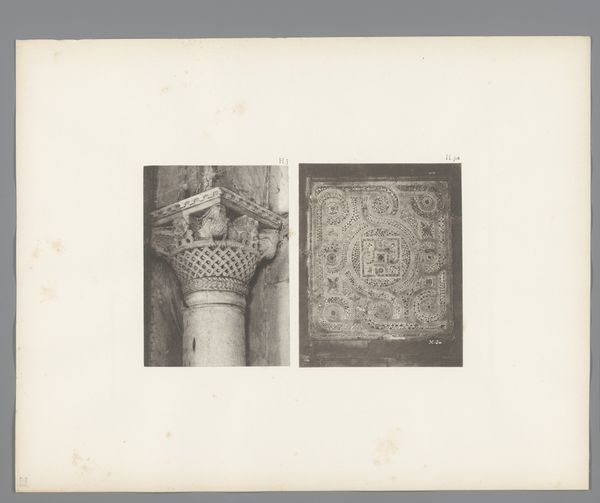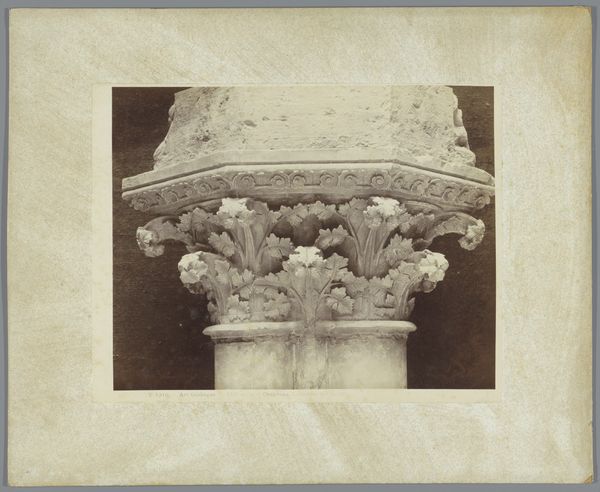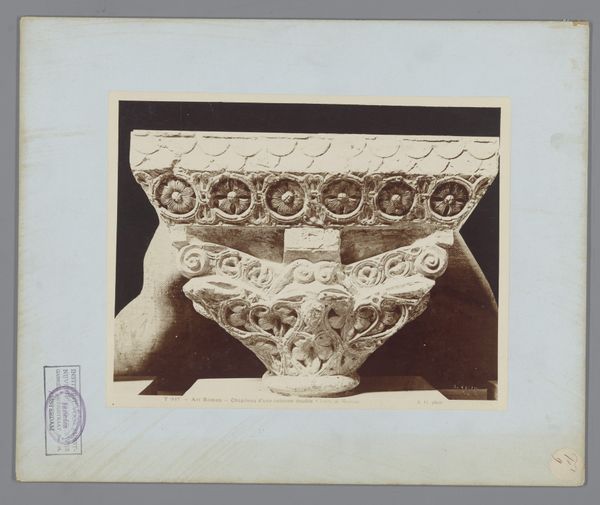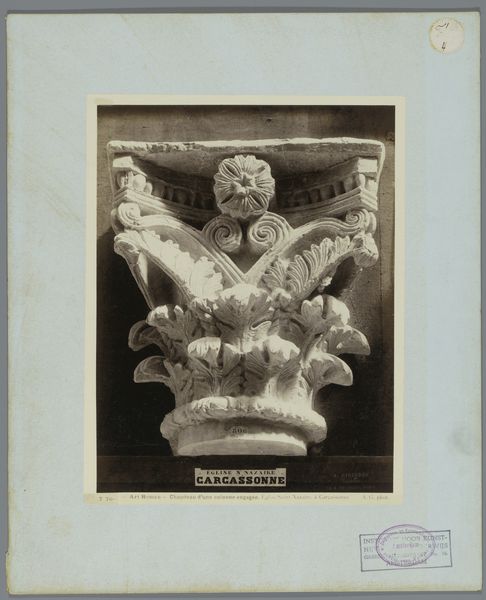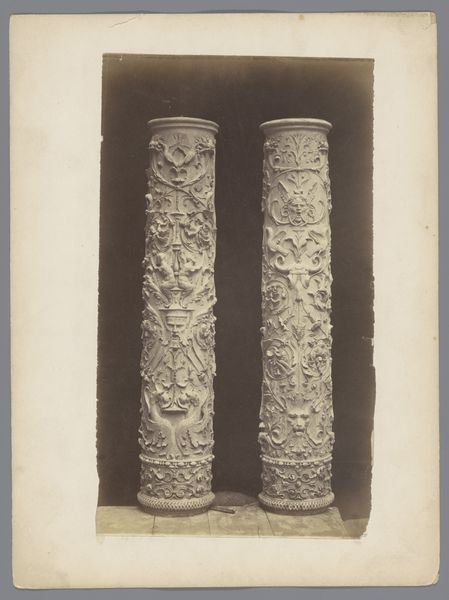
Kapiteel van een dubbele zuil van het Daurade klooster in Toulouse 1850 - 1900
0:00
0:00
carving, print, photography, sculpture, marble
#
photo of handprinted image
#
aged paper
#
toned paper
#
carving
#
muted colour palette
# print
#
photography
#
romanesque
#
ancient-mediterranean
#
sculpture
#
marble
#
statue
Dimensions: height 310 mm, width 369 mm
Copyright: Rijks Museum: Open Domain
Editor: This is a photograph of a carved capital from a double column, dating from between 1850 and 1900, taken by Adolphe Giraudon. It’s currently held in the Rijksmuseum. The marble is so detailed, almost unbelievably intricate. What strikes you when you look at this? Curator: I’m drawn to the image itself, beyond the stone it depicts. Look at the process: someone meticulously documenting a piece of Romanesque architecture. How does the act of photographing and printing – essentially reproducing – impact our understanding of the original craftsmanship? Editor: That’s interesting. So, it’s not just about the capital itself, but about how this image allows it to be disseminated and viewed. Curator: Precisely. And consider the choices made in creating this print. The toning of the paper, the hand-printing process. These aren’t neutral acts; they are interventions that add layers of meaning, changing how it's understood outside the original architectural context. What's the effect of removing a functional element from its setting and presenting it as a… specimen? Editor: It flattens it somewhat, losing the sense of scale and context it once had as part of something larger. Do you think the printing process at the time reflected artistic values too? Curator: Absolutely. Think about the labour involved in creating this image versus the labour that made the original column capital, with its echoes of consumption by an eager market of architectural historians. What value judgements are being made through this transaction? Editor: I hadn’t considered it that way before; seeing it as a chain of production, consumption, and interpretation rather than just a historical artifact. It feels like there are unseen hands contributing meaning at every step. Curator: Exactly. That’s the beauty of focusing on the materials and processes: they reveal the often-hidden web of human activity and values that shape our understanding of art and history.
Comments
No comments
Be the first to comment and join the conversation on the ultimate creative platform.
